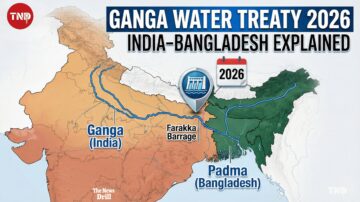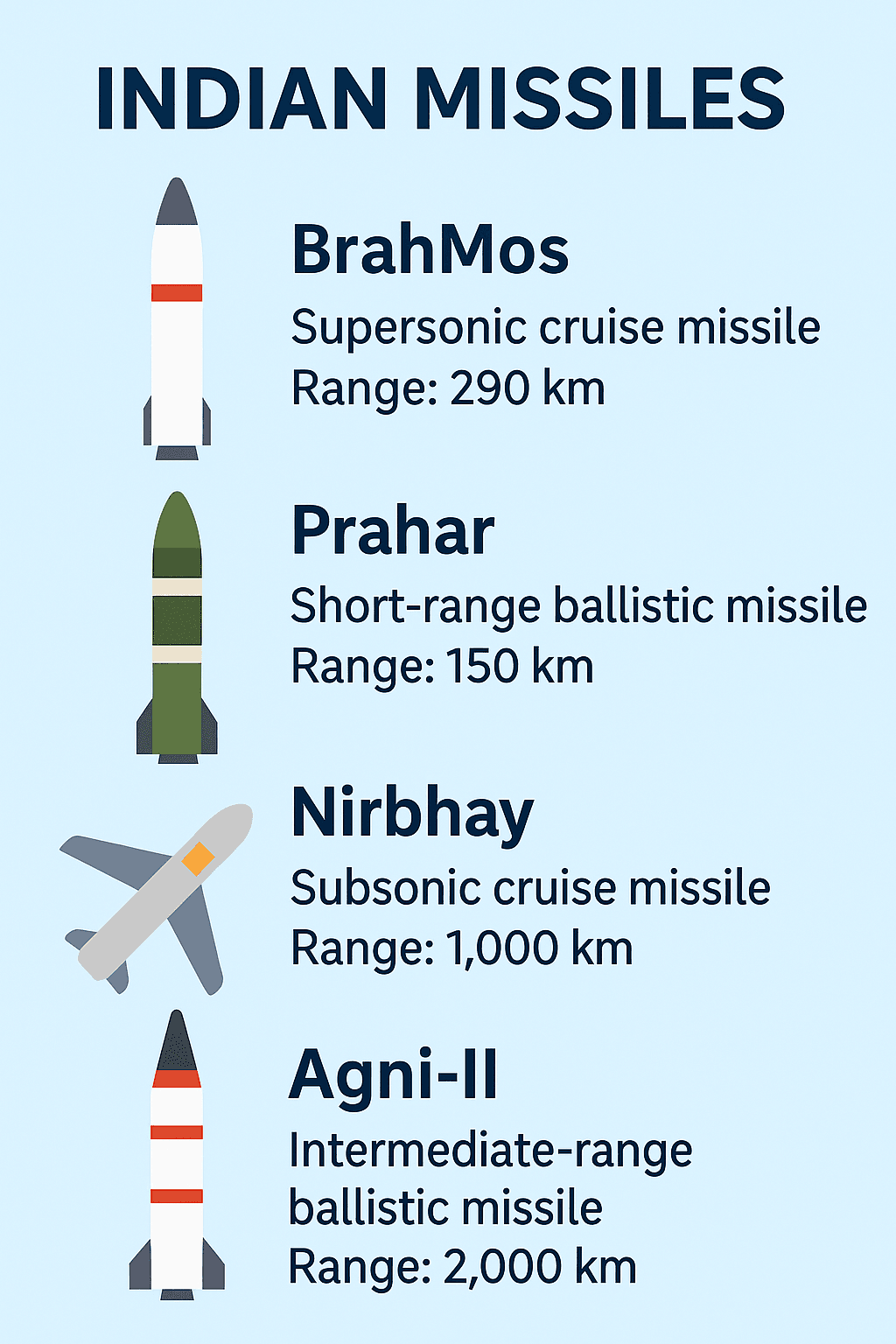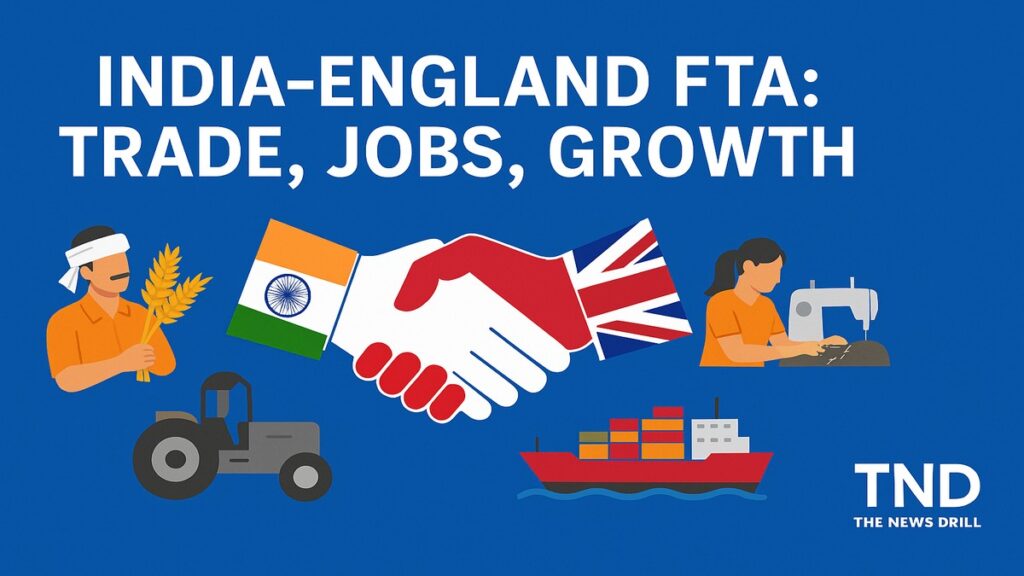
Ahmedabad – In a landmark development, India and the United Kingdom have finalized a comprehensive India England Free Trade Agreement, marking a significant chapter in bilateral relations. The deal described as historic by trade experts and policymakers alike unlocks massive economic opportunities and strengthens the diplomatic fabric shared between the two democracies.
- Key Highlights of the India England Free Trade Agreement
- 1. Zero Duty Access to the UK Market
- 2. Empowering Women and Professionals
- 3. Boost to Agriculture: A Win for Indian Farmers
- 4. Blue Economy and Coastal Growth
- 5. MSMEs: Gaining a Global Footing
- 6. Leather, Footwear, and GI Products: A Cultural Export
- 7. Boost to the Chemical and Pharmaceutical Industry
- Strategic Importance of the India England Free Trade Agreement
- Challenges and What’s Next?
- Conclusion
With a shared vision of growth, prosperity, and global leadership, the India England FTA is poised to double bilateral trade from over $56 billion to more than $100 billion by 2030. As the first Indian FTA to include gender-inclusive provisions and extensive duty free access across sectors, the deal is also a strategic alignment with the Government of India’s Viksit Bharat 2047 vision.
Key Highlights of the India England Free Trade Agreement
The India England Free Trade Agreement is far reaching and multifaceted. It touches upon several core sectors and addresses long pending trade irritants.
1. Zero Duty Access to the UK Market
More than 99% of Indian exports to the UK will now enjoy zero duty access, dramatically improving price competitiveness and enabling Indian exporters to tap into the world’s fifth largest economy with greater ease.
Electronics and engineering goods now enter with zero tariffs.
1,659 engineering tariff lines are now duty free.
Seafood and marine exports, including shrimp and tuna, now get 99% zero-duty access.
Jewellery exports are expected to double within 2–3 days post deal.
This move significantly improves India’s global market standing and aligns with the Make in India initiative.
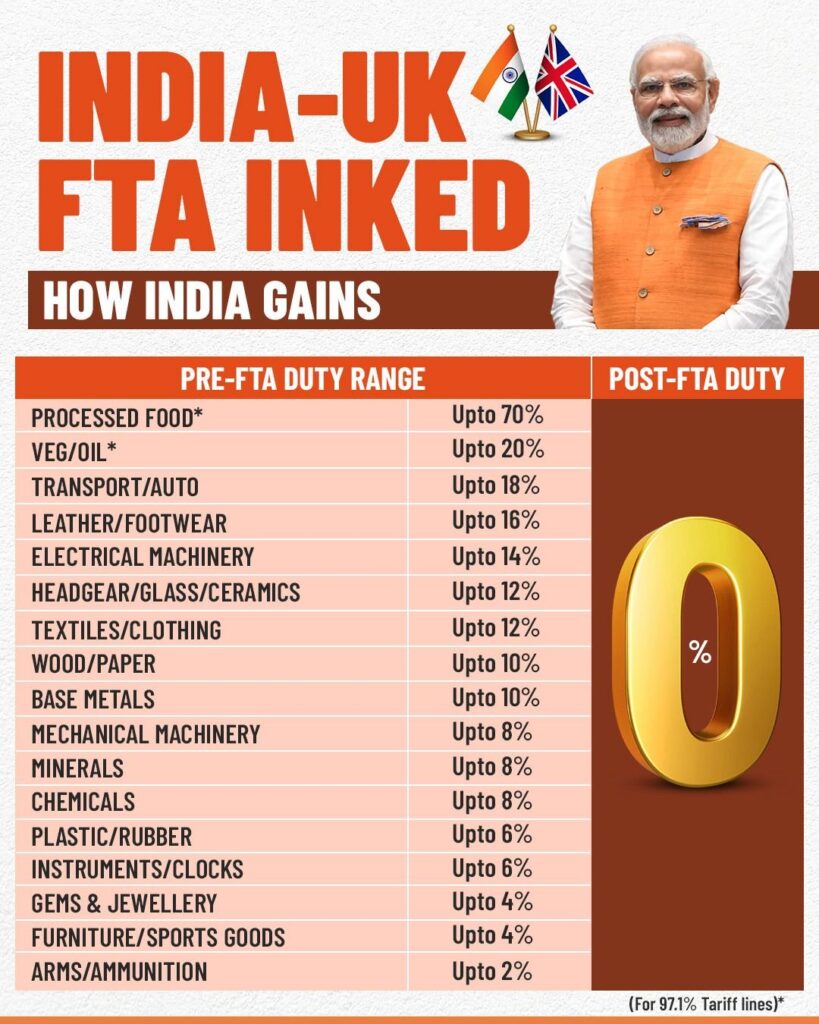
2. Empowering Women and Professionals
The India England FTA stands out as the first Indian trade deal with gender inclusive provisions, empowering women in trade and employment sectors.
Thousands of women in seafood processing, textile, and leather industries stand to benefit from increased production and exports.
Additionally, 75,000 Indian professionals working in the UK will be exempted from social security payments for up to three years, enhancing disposable income and ease of working abroad.
This people centric approach redefines the scope of FTAs, making them more inclusive and socially aware.
3. Boost to Agriculture: A Win for Indian Farmers
Agriculture is a big winner under the India England Free Trade Agreement. The UK has agreed to eliminate duties on over 95% of agricultural tariff lines, opening floodgates for Indian farm produce.
Major Beneficiaries:
Punjab, Haryana, Maharashtra, Kerala, Gujarat, and the Northeast states.
Products Covered:
Fruits, vegetables, millets, cereals, organic herbs, turmeric, cardamom, and pepper.
This not only increases export margins but also encourages diversification and higher income for farmers.
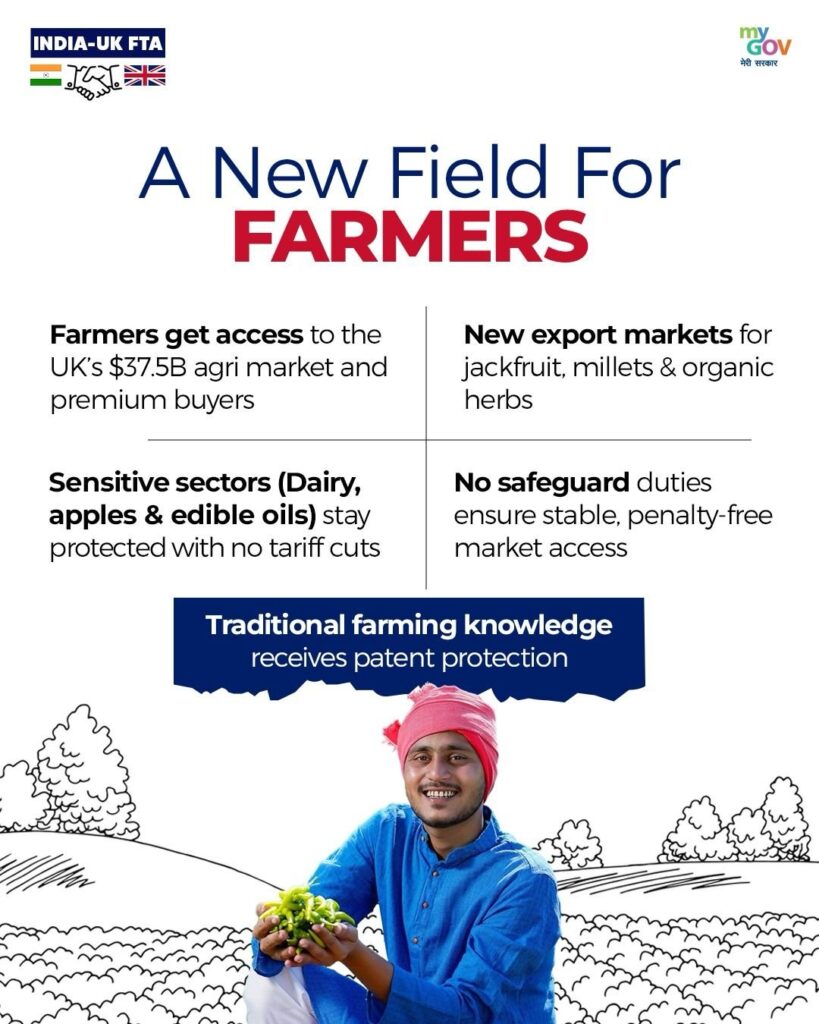
4. Blue Economy and Coastal Growth
India’s Blue Economy is set for an unprecedented boom. The England India FTA removes duties on 99% of marine exports.
Impact:
Coastal states like West Bengal, Odisha, Andhra Pradesh, Tamil Nadu, Kerala, Karnataka, Goa, Maharashtra, and Gujarat will benefit from export led job creation.
Increased capacity utilization in seafood plants employing thousands of women will lead to job growth and higher output.
The agreement is expected to double India’s marine exports to the UK within five years.
5. MSMEs: Gaining a Global Footing
The England India Free Trade Agreement gives a much needed global push to Indian MSMEs, particularly in labour intensive sectors.
Benefits:
- Duty free access for textiles, handicrafts, leather goods, and furniture.
- Simplified certification processes and logistics.
- Access to trade finance and skill training.
MSMEs can now explore UK markets with confidence, increasing employment and driving innovation in smaller towns and cities.
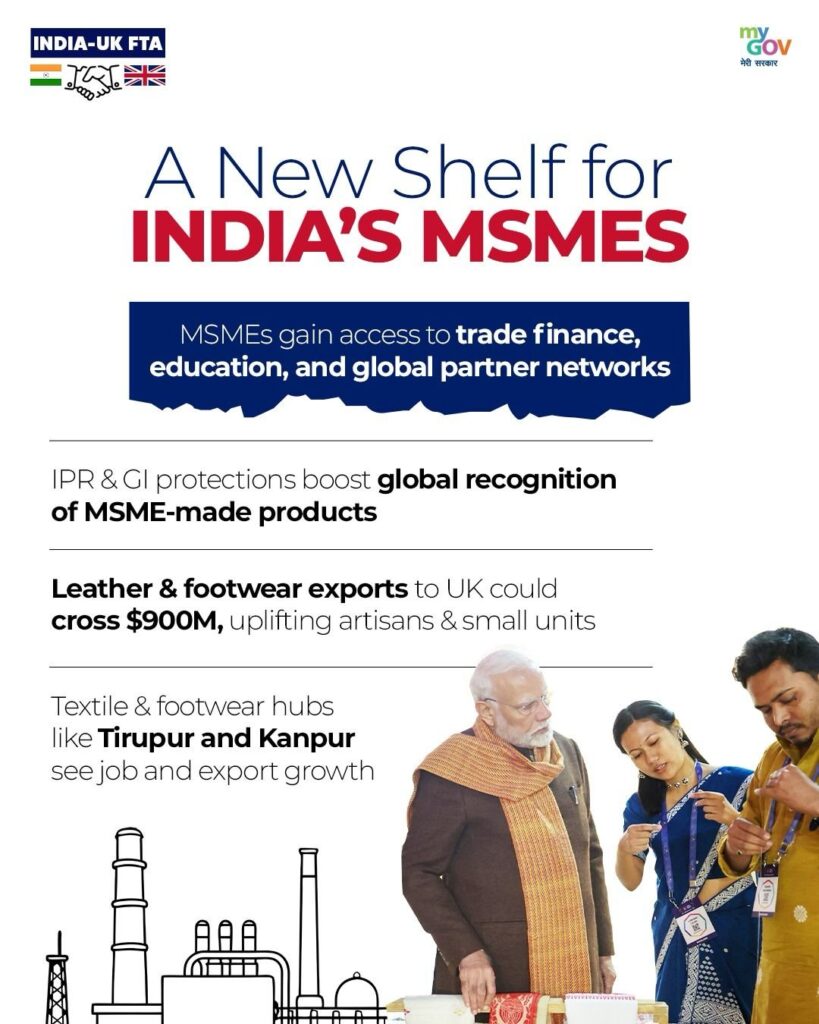
6. Leather, Footwear, and GI Products: A Cultural Export
Indian cultural exports are also finding a strong platform under the India England FTA.
- Leather goods and footwear, previously taxed at 16%, now have zero duties.
- Indian Geographical Indication (GI) products like Kolhapuri chappals get better brand recognition and price realization.
This translates into enhanced income for artisans, preservation of heritage crafts, and a stronger global identity for local products.
7. Boost to the Chemical and Pharmaceutical Industry
The UK has also agreed to eliminate tariffs on several chemical exports, projected to grow by 30-40%.
Zero duty access enhances the competitiveness of Indian generic pharmaceuticals, which already have a strong reputation in the UK.
Regulatory cooperation will also allow quicker certifications and smoother market entry.
This strengthens India’s position as the “Pharmacy of the World“.

Strategic Importance of the India England Free Trade Agreement
This FTA is not just an economic pact it’s a geopolitical and strategic milestone.
Aligning with Viksit Bharat 2047: India aims to become a developed nation by 2047. The India England Free Trade Agreement is designed to push high growth sectors and foster economic diplomacy.
Post Brexit UK & Global Realignment: For the UK, this deal is a key post Brexit trade milestone, diversifying trade away from the EU and toward Asia.
Shared Values and Democratic Synergy: Both countries uphold democratic governance, rule of law, and sustainable development. The FTA builds on shared goals in climate, innovation, and economic resilience.
Challenges and What’s Next?
While the England India Free Trade Agreement offers a treasure trove of benefits, effective implementation remains crucial.
Key challenges include:
Ensuring last mile logistics and certification support for MSMEs.
Training women and youth to fully utilize new trade opportunities.
Addressing non-tariff barriers such as quality checks, phytosanitary standards, and digital taxation.
The government is also expected to roll out trade literacy programs and export awareness drives in tier-2 and tier-3 cities to democratize the benefits of this trade deal.

Conclusion
The India England Free Trade Agreement is a watershed moment for India’s economic diplomacy. It redefines how two nations can cooperate for mutual benefit, empowering small businesses, supporting gender inclusive growth, and boosting exports across key sectors.
From Punjab’s farmlands to Tamil Nadu’s coasts, from the jewellery lanes of Surat to the MSME clusters of Moradabad, this agreement opens new global frontiers.
As India marches ahead toward its Viksit Bharat 2047 vision, the India England FTA offers a blueprint of collaboration, economic opportunity, and shared prosperity.


